Back to Don's Maps
Back to Venus figures from the Stone Age
Venus figure from Las Caldas
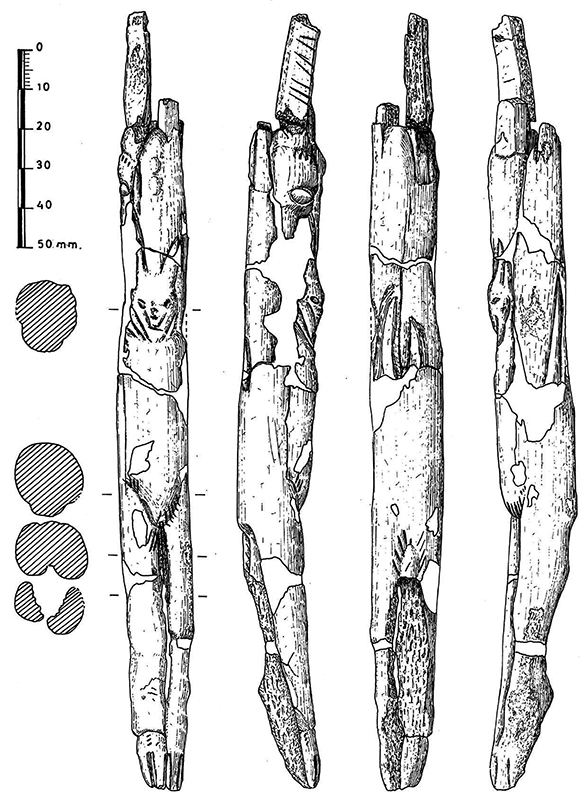
Drawing of the Venus figure from Las Caldas Cave.
This figure has the head of an ibex and the legs and genitals of a female human.
Some think it is not meant to be a venus, but is part of an atlatl, a spear thrower.
This representation ("Venus" of Las Caldas) is modeled in relief on a rod, which may be a propulseur.
Its dimensions are 198 x 17.5 x 17.5 mm, and it comes from the basal section of the Magdalenian (level VII), dated at 13,400 ± 150 BP, at the end of older Dryas.
Some sources say it is made of antler. This is most likely to be deer antler, not reindeer antler, given the fauna list below, since reindeer were not hunted here.
The figure is a composite representation that combines human body proportions with some animal features. The torso has human proportions, being 50% of the total height, the pelvic-abdominal area is centred on the pubis. As well, the gracefulness of the trunk, marked shoulders and engraved external genitals are human. In contrast, the triangular head has the horns of a goat, and the feet are cloven-hoofed.
The horns, short and cylindrical and straight are of a female ibex (in the male the horns are more well developed and curved back, shown quite explicitly in many other engravings and in reliefs).
Regarding the limbs, the arms are not shown, and the legs are very slender. The distance from the thigh to the knee is the same as from the knee to the feet (37 mm.) This is far away from the actual proportions of a goat, which has a thick body and short and stout limbs.
The back is largely unmodeled.
Photo and text: Corchón (1990)

Photo of the Venus figure from Las Caldas Cave.
Photo: Corchón-Rodriguez (1990)
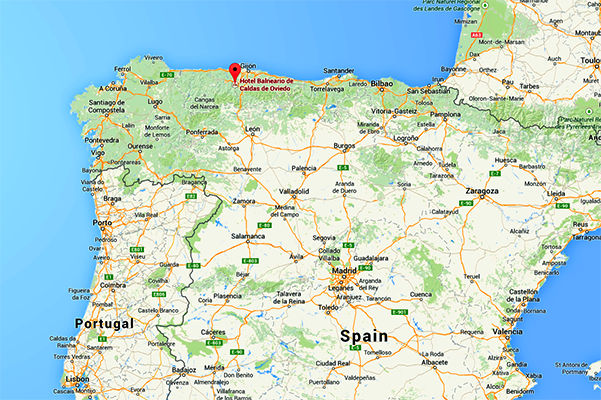
Las Caldas Cave is in northern Spain.
Photo: Google Maps
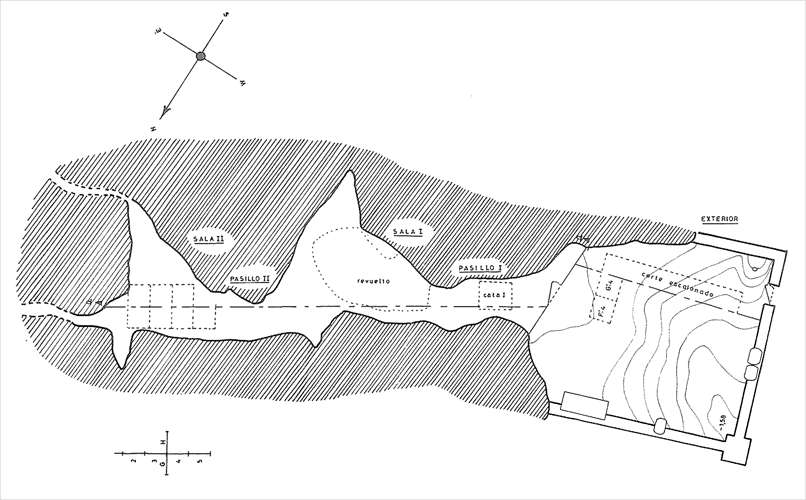
Plan of Las Caldas Cave.
Photo: Corchón-Rodriguez (1981)
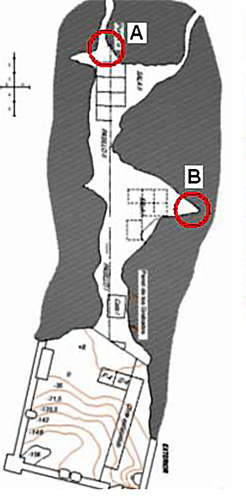
Another plan of Las Caldas Cave, using laser technology to map the cave.
Photo: González-Aguilera et al. (2009)
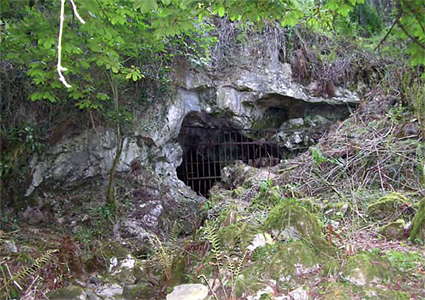
Entrance to Las Caldas.
Photo:
Corchón-Rodriguez et al. (2009?)
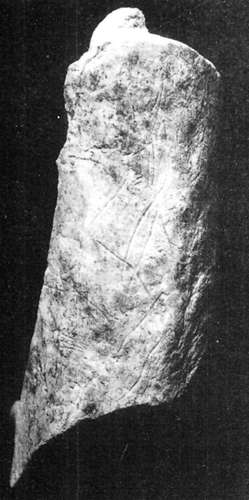

Las Caldas Engraving.
Two stylised female profiles overlapped on an engraved rod. Middle Magdalenian.
These are similar in style to the Lalinde - Gönnersdorf figures.
Dimensions: 75 x 24.5 x 5.5 mm
Age: 13 400 BP.
Photo: Corchón-Rodriguez (1990)
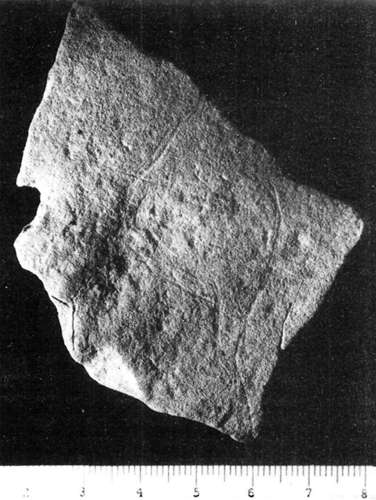
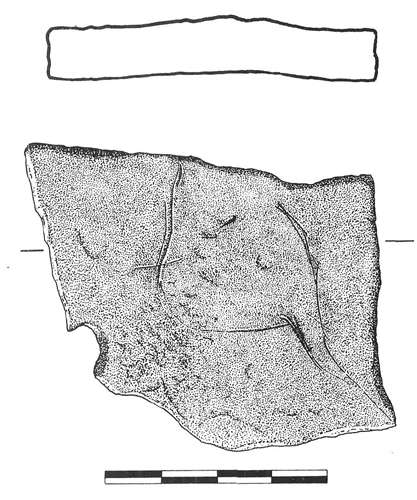
Las Caldas Engraving.
A stone plaque with the stylised profile of a (possibly) pregnant woman.
Dimensions: 65 x 55 x 10 mm
Age: 13 400 BP, Middle Magdalenian.
Photo: Corchón-Rodriguez (1990)
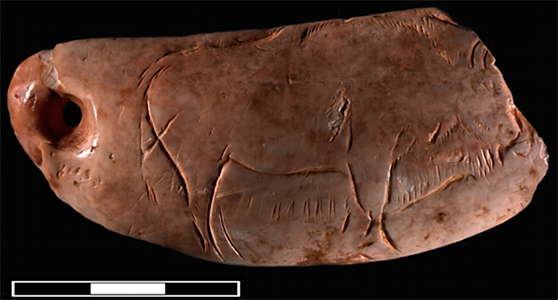
Sperm whale tooth with an engraved bison from Las Caldas. There is an engraving of a whale on the other side.
Length: 52 mm
Photo: Olivia Rivero. Trabajos de Prehistoria vol. 68, No. 2 (2011), p. 281.
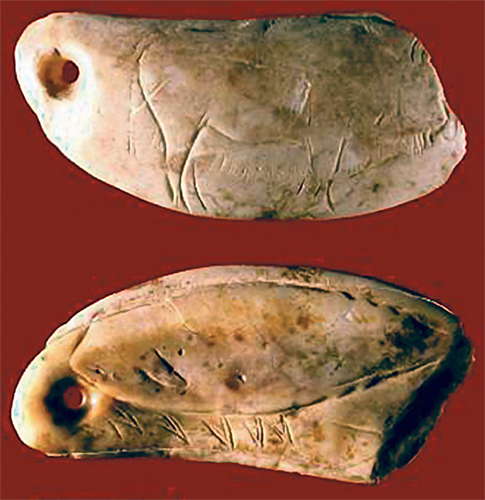
Sperm whale tooth with an engraved bison on one side, and a whale on the other.
Length: 52 mm
Photo: http://antiguaymedieval.blogspot.com.au/2010/03/quince-joyas-con-sello-asturiano.html
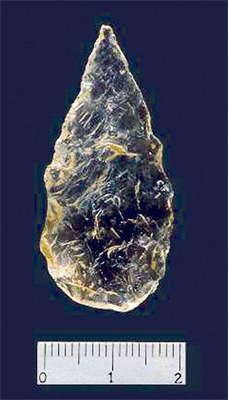
Superbly made laurel leaf point from the Upper Palaeolithic. It has been pressure retouched by a master craftsman, and is made of rock crystal.
It has never been used, and may be a status or ritual object.
Similar items never designed to be used were used as status objects by Australian Aborigines, for prestige as masterworks of the knapping craft.
Photo: http://comunidad.lne.es/galeria-multimedia/Sociedad/Joyas-sello-asturiano/12640/11.html
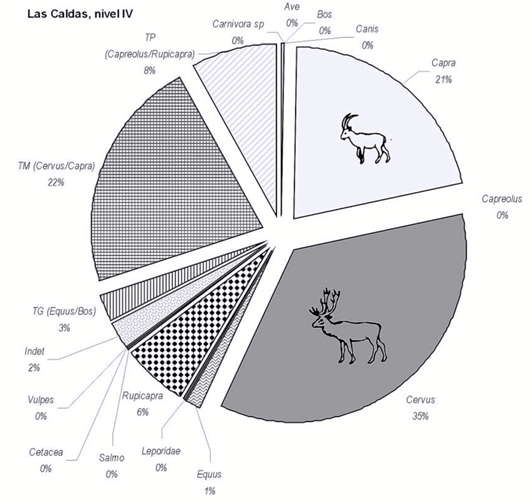
Las Caldas, fauna: the top of the middle Magdalenian evolved (A. Mateos 2005).
Photo: Corchón-Rodriguez (2005)
14C dates for Caldas:
Caldas IV Ly-2427 13 400±150 BP 13 800±240 cal BC Mag. med.evol. Corchón-Rodriguez (2005)
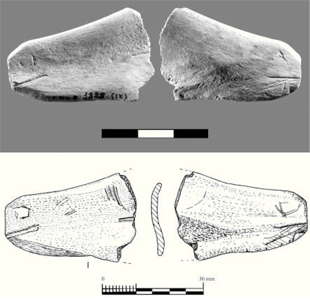 Las Caldas, Level IX: unfinished horse head, cut from a horse hyoid bone (núm. 1888).
Las Caldas, Level IX: unfinished horse head, cut from a horse hyoid bone (núm. 1888).
Photo: Corchón-Rodriguez (2005)
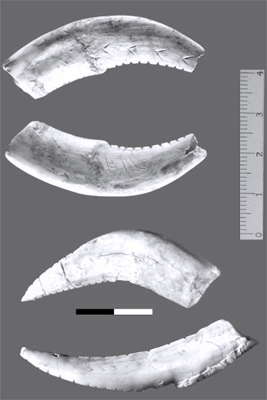
Early Middle Magdalenian. Engraved horse canine teeth.
(It is usually on male horses which have canine teeth - Don )
Las Caldas (n.IX, top, two views of the one tooth) and La Garma (two different teeth, bottom)
Photo: Corchón-Rodriguez (2005)
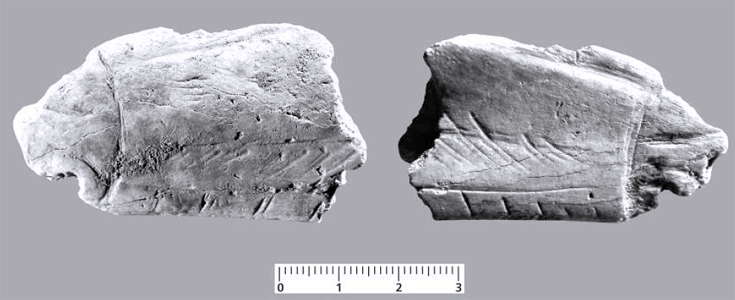
Las Caldas, Level VIII: horse head fragment containing the remains of a hole in the hyoid bone from a young horse (núm. 2848).
Photo: Corchón-Rodriguez (2005)
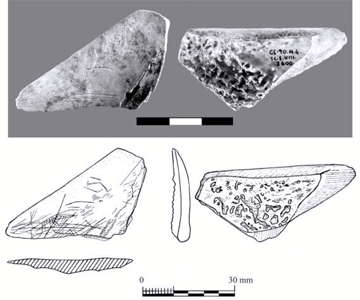
Las Caldas, Level VIII: knife on the shaft of a long bone, with the outline of a doe engraved on the back (núm. 2600).
Photo: Corchón-Rodriguez (2005)
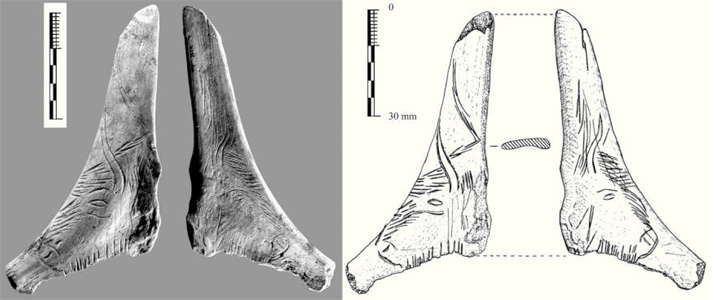
Las Caldas, Level VII: bison heads engraved on the hyoid bone of a young horse (núm. 1554).
Photo: Corchón-Rodriguez (2005)
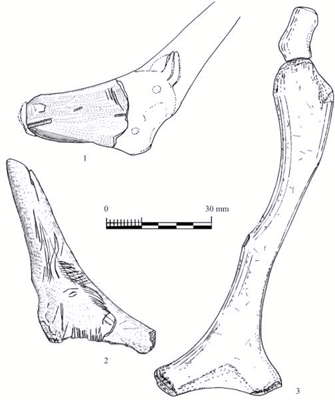
1: Reconstruction of an engraving on a hyoid (núm.1888) from Las Caldas.
2, 3: Hyoid of a young horse (núm. 1554, Las Caldas) and an engraving of a young bovid.
Photo: Corchón-Rodriguez (2005)

Las Caldas, Level VIII: hyoid bone (núm. 2848) showing both sides.
Below, reconstruction of the hyoid (núm. 1554) from Las Caldas using as a graphical model a similar piece from Isturitz.
(this reconstruction should be compared with that in the image above for núm. 1554 - Don )
Photo: Corchón-Rodriguez (2005)
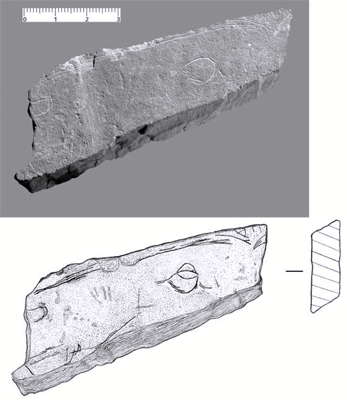
Las Caldas, Level VIIIb: sandstone plate (núm. 1023) fine-grained and compact,
shaped and engraved as a cut out outline.
Photo: Corchón-Rodriguez (2005)

Las Caldas, ancient stage. Anthropomorphic women:
1: female with a lump on the back (núm. 3771, n.IXa)
(I can't help but wonder if this is a child carried on the back, as for one of the Gönnersdorf engravings - Don )
2: Possible leather fringes on the upper body (núm. 6080, n.IXb);
3: Figure in a squatting position (núm. 5099, n.VIII);
4 Anthropomorphic figure but with a horse tail (núm. 3201, n. IXa)
5: horse hooves in relief (on a long bone, n. IXb).
6: horse hoof (on a rib, n.IX).
7: Leg and hoof of a bison(?) in relief (propulseur, or spear thrower, n. IXC)
Photo: Corchón-Rodriguez (2005)
References
- Corchón-Rodriguez Ma.S., 1981: Cueva de Las Caldas. San Juan de Priorio (Oviedo). Excavaciones Arqueologicas en España, 115, Madrid.
- Corchón-Rodriguez Ma.S., 1990: Iconografía de las representaciones antropomorfas paleolíticas a propósito de la « Venus » magdaleniense de Las Caldas (Asturias)Congrès Religiones prehistóricas de la Península ibérica. Coloquio internacional. 1, Salamanca, (04/05/1987) 1990, vol. 43, pp. 17-37
- Corchón-Rodriguez Ma.S., 2005: Los contornos recortados de la cueva de Las Caldas (Asturias, España), en el contexto del Magdaleniense medio cántabro-pirenaico Munibe (Antropologia-Arkeologia) 57 Homenaje a Jesús Altuna 113-134 San Sebastian 2005 ISSN 1132-2217
- Corchón-Rodriguez Ma.S., González-Aguilera D., Muñoz-Nieto A., Gómez-Lahoz J., Sabas Herrero J., 2009?: Documentation, Modelado y Reconstruccion 3D de la Cueva de las Caldas (Asturias, Espana) VI. El Yacimiento y el Arte Parietal
- González-Aguilera D., Muñoz-Nieto A., Gómez-Lahoz J., Herrero-Pascual, J., Gutierrez-Alonso G., 2009: 3D Digital Surveying and Modelling of Cave Geometry: Application to Paleolithic Rock Art Sensors 2009, 9, 1108-1127; doi:10.3390/s90201108